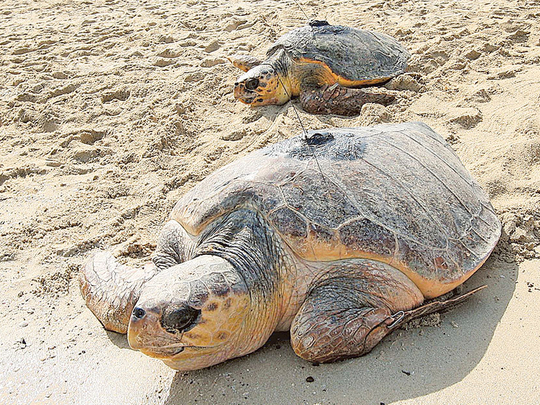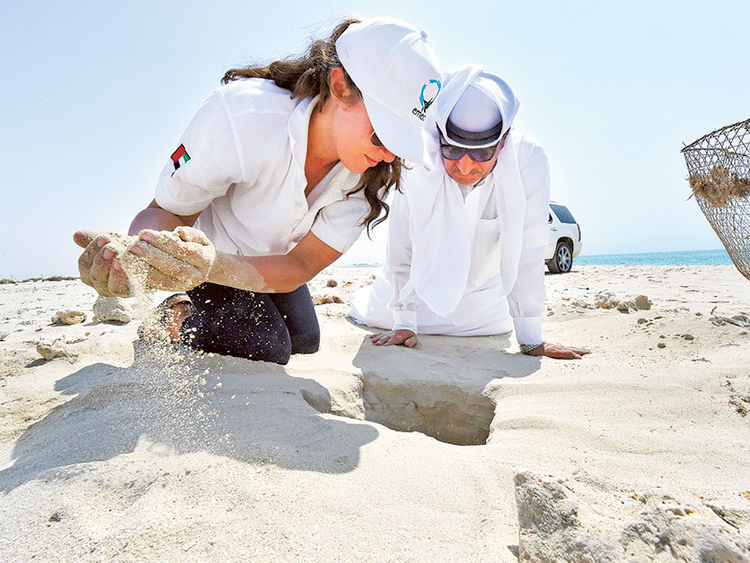
Dubai: The globally endangered hawksbill sea turtle appears to be making a comeback in UAE waters albeit ever so slowly, marine ecology officials say.
Under stress due to decades of increased human activity, pollution and natural threats in the Gulf, the hawksbill turtle has been a source of concern for environmentalists who have closely monitored the annual migration of the well-travelled sea creatures.
Since 2005, the hawksbill has been a number-one priority for the Emirates Marine Environmental Group (EMEG), which overseas an enclosed 25 square-kilometre beachfront Jebel Ali sanctuary, adjacent to Palm Jebel Ali.
Ten years ago, EMEG observers recorded only two hawksbill nests along the 5km beach, a sign that the turtle was struggling as increased development claimed more shoreline areas once used for nesting.
This year, however, Major Ali Saqr Al Suwaidi, president and founder of EMEG, said 37 hawksbill nests were created in the sanctuary this year, the highest since records were first kept.
A further 377 hawksbill nests were recorded on Sir Bu Nair Island — a 1,300-hectare island, 112km off the Sharjah coast — the highest since EMEG began keeping records.
The group monitors the island throughout the nesting season from March to June.
While certainly not back to the levels of 50 years ago when hawksbill turtles dug as many as 500 nests on Dubai’s beaches — from Palm Jumeirah to the Abu Dhabi border — Al Suwaidi is overjoyed to see so many hawksbill females returning.
Last year, EMEG counted only 25 nests at the sanctuary.
Each nest contains about 80 eggs, of which about 80 per cent survive to the hatchling stage. Once in the Gulf, the rate of survival for reaching adulthood is only 10 per cent.
The slim chance of survival combined with the slow maturity and reproductive rate of 30 years of age for the hawksbill make conservation efforts critical.
“This is very good news after monitoring them for the last 10 years,” Al Suwaidi said on the beachfront during an inspection of one of four nests where hatchlings made their sprint to safety in the nearby Gulf beach waters. “This is a very big number for us here, we’ve never had this many nests before and we’re very excited. The hawksbill is returning slowly and we’re doing everything we can to help protect the females for the next generations of the turtle.”
Hannah Campbell, EMEG programme manager, said as the return rate of hawksbill turtles has climbed, naturally so have the numbers of nighttime raids by desert foxes who will each eat up to 20 eggs if given the chance.
Staff walking the beach of the EMEG sanctuary at night, Campbell said, managed to thwart some fox raids and protect the eggs by placing metal fishing gargour covers over the nests.
“One night we discovered one female nesting and we could see the shadows of the foxes. We had to scare three or four of them away without scaring the female. The foxes are very tenacious, very determined,” Campbell said.
To help reduce the threat to the hawksbill turtle eggs, EMEG is working with Dubai Municipality which has set up a live-trap system to catch the small red foxes in the sanctuary and relocate them to new wild areas in the emirate.













